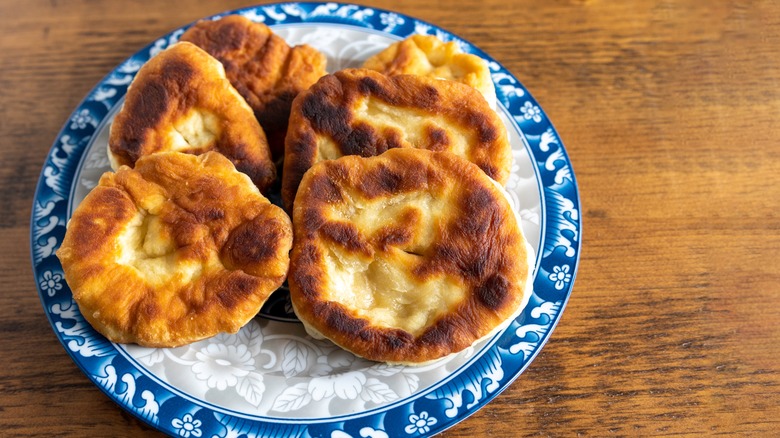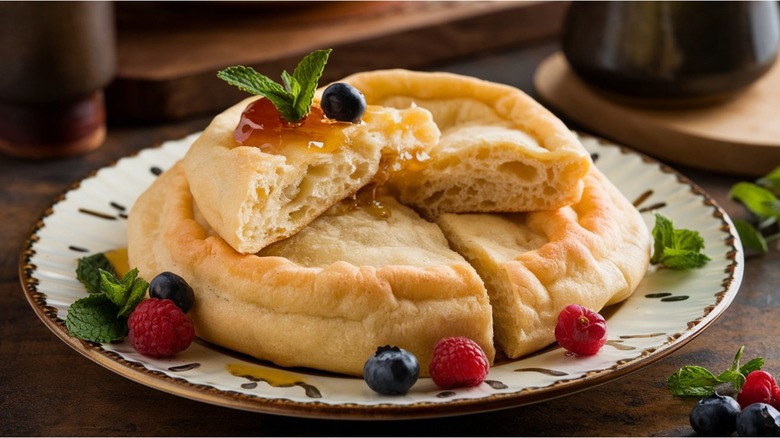Bannock: The Traditional Indigenous Canadian Bread You Can Cook 2 Ways
Like most foods, bannock — often referred to as fry bread — has a winding history as a versatile staple and Canadian comfort dish. Said to have originated in Scotland, the flatbread was introduced to North America by fur traders in the 18th and 19th centuries. During the long Canadian winters, Indigenous people and fur trading settlers alike used the simple bread, which requires minimal ingredients and prep time, as a reliable source of carbohydrates.
The name comes from the Scottish cooking method for the bread, in which it is cooked on top of a bannock stone placed before a roaring fire. However, the First Peoples of Canada have their own names for bannock, including palauga (the name used by Inuit peoples), and bakwezhigan (the Ojibwe term). Recipes vary, but the main ingredients in modern bannock recipes are flour, baking powder, salt, water, and lard or butter.
Bannock may be attributed to the influence of settlers, but even before Scottish trappers came to North America, there is evidence that native people were making their own version of flatbread with ground acorn, bean, or corn flour, rather than the more European white flour that is used in bannock today. For some iterations of this bread, other ingredients ranging from black tree lichen to huckleberries were (and still are) added to turn the bread alternatively into a hardy item for long trips or a sweet treat for dessert. Cooking methods vary as well — most people don't cook the bread on a stone by the fire anymore, but that's certainly an option. Otherwise, the most common methods are baking bannock or frying it in hot oil.
A timeless side dish
Although the First Nations and other Indigenous people of Canada had their own recipes for flatbread, bannock uses ingredients like white flour and baking soda that weren't previously common among the tribes — and their introduction wasn't entirely voluntary. When Indigenous people were moved to reservations by the Canadian government, they were given rations of flour, lard, sugar, and eggs, among other items. The availability of these ingredients, and the lack of access to many traditional ingredients, increased the popularity of bannock among Native people tenfold — it was a survival food in many ways.
Today, Indigenous people have reclaimed this fry bread and eat it in many forms. For the Inuit, it is often shaped into scones that are eaten with tea or for dessert. Others eat it for breakfast topped with fresh berries or maple syrup. Still others use bannock for a specific version of tacos, topped with chili, sour cream, and salsa, served at powwows.
If you have half an hour to spare this week, try making bannock yourself as a sweet breakfast treat or a tea time snack (and make sure to share it with someone you love, as community and food go hand-in-hand in Native American culture). After all, making food from a culture different than your own can be a wonderful way to respectfully engage in learning about the diversity of the world around you.

